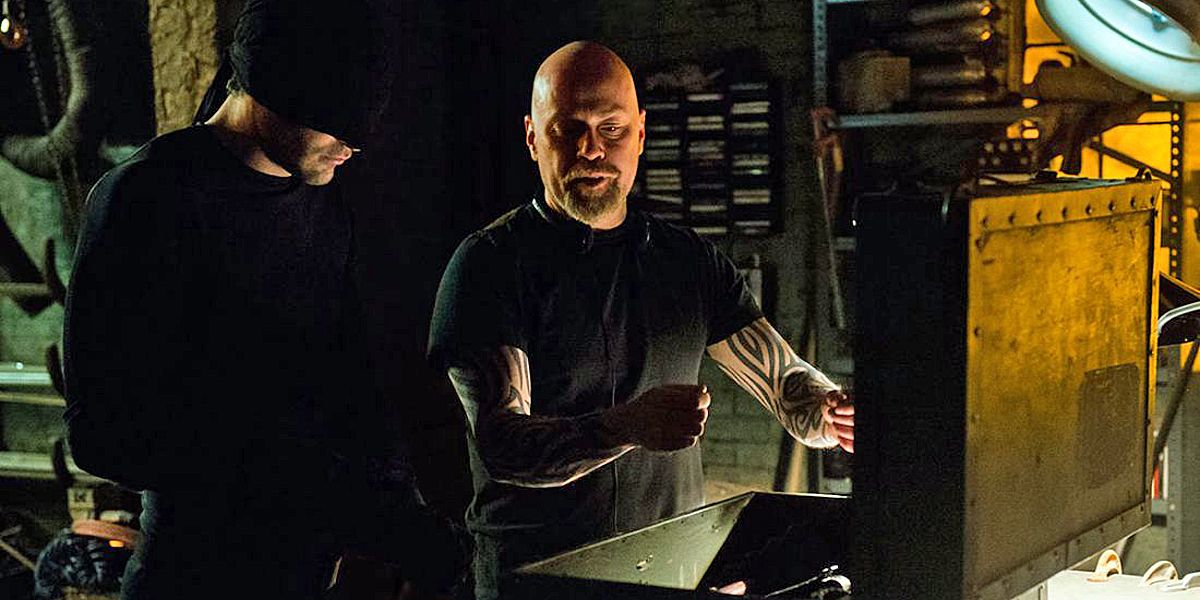Key points
- Around 40,000 people will descend on the tiny WA town of Exmouth to see the total solar eclipse in 2023.
- The event, which only happens on one part of Earth every 400 years or so, will take place on 20 April at 11.27am.
- Exmouth Shire president Darlene Allston says planning has been a challenge, with the area’s isolation a big factor.
Dubbed the ‘Ningaloo eclipse’, a total solar eclipse will take place there at 11.27am on 20 April.
While there’s usually at least one solar eclipse viewable from Earth each year, the area from which they are visible is only ever quite small, and given two-thirds of the planet is covered by water, you can’t always see them from land.
Life as an eclipse chaser
In Exmouth, the eclipse will last 62 seconds.
Kryss Katsiavriades (wearing red) saw his first total eclipse in Java in 1983. Source: Supplied / krysstal.com
While there is little to see initially with an eclipse, Mr Katsiavriades says the magic soon takes hold.
“You can actually see it in the distance, sometimes that produces spectacular effects. And then during ‘totality’, you can actually look at it with the naked eye.”
During totality, you can actually look at it with the naked eye.
– Kryss Katsiavriades, Eclipse chaser
Animals, including pet dogs, will act strangely too, Mr Katsiavriades says, as day appears to become night and then switches back again.
Kryss Katsiavriades enjoys photographing eclipses. He took this in Sulawesi, Indonesia, in 2016. Source: Supplied / krysstal.com
He recalls watching an eclipse in a small Indian village and seeing a farmer with his oxen: “He was guiding them out of the village, it was eight o’clock in the morning and the oxen wanted to turn around and come back because it was getting dark”.
At an eclipse in Shanghai, fish started to jump out of the ocean.
How tiny Exmouth will cope
“We want everyone to have a great time. But we also want everyone to respect Ningaloo and the environment for what it is.”
Tourists often pose in front of Exmouth’s giant prawn which celebrates its prawn and fishing industry. Source: AAP / SUSANNA DUNKERLEY
WA has been allowing visitors back into the state only since March 2022 after shutting off entry to much of the world for almost two years during the COVID-19 pandemic.
The shire is estimating around 20,000 people will stay within the local area for the eclipse and a further 20,000 or so will converge up and down the coast within the Pilbara and Gascoyne regions. Spectators there should still be able to get a view of the eclipse if conditions are clear, but a small sliver of the sun will still be visible, allowing sunlight through.
The region’s authorities have also had to consider how the power network and water supply will cope with the extra demand, and food trucks will be brought in to back up the town’s cafes, pubs and restaurants.
The eclipse will coincide with peak tourist season in Exmouth when tourists flock to the area to swim with whale sharks. Source: Supplied / Tourism Western Australia
Ms Allston says there will also be a public education campaign to remind visitors to be on their best behaviour.
“We as a community respect our environment. So we will be putting the message out to try and help us keep it the way we love it,” Ms Allston says.
The Shire of Exmouth will be operating overflow camping setups and is allowing homeowners to open up their backyards to people looking to camp. Source: Getty / Photon-Photos
Exmouth will also host a three-day ‘Dark Sky Festival’ with stargazing, live music and dining experiences, with events also in Carnarvon to the south and Onslow to the north.
What will the rest of Australia and the world see?
The total solar eclipse will also be visible in eastern parts of Timor Leste and the province of Papua and Damar Island in Indonesia.
Depending on conditions in and around Exmouth, people may be able to see stars in the sky during the day when the moon eclipses the sun. Source: Supplied / Tourism Western Australia, Marco Kraus.
Other parts of Australia (plus many Pacific Island countries, Indonesia and the Philippines) will be able to see the ‘hybrid’ solar eclipse, where the moon passes between the Earth and the sun.
“I think it will still be a very interesting sight, even from Perth,” says Hadrien Devillepoix, research associate at the School of Earth and Planetary Sciences at Perth’s Curtin University.
“Even in parts of the east of Australia, you’ll still get something like 20 per cent of the surface of the sun obscured but you might still be able to observe something from there. So I think there’ll be something for everyone.”
Those driving in Exmouth are warned to drive carefully and look out for emus. Source: Getty / MXW Stock
A partial eclipse — where about 90 per cent of the sun will be covered by the moon — will be visible 600 kilometres south of Exmouth in the town of Denham and the Shark Bay area — or Gutharraguda in the Aboriginal Malgana language.
“It’s all interrelated; the sea, the animals, food and the moon.”
Capes says his ancestors had a strong connection with the sun, moon and sky. Source: Supplied / Tourism Western Australia
Capes’ people believe the stars are their ancestors.
“We’re taught not to point at shooting stars as they represent our Elders moving through the sky,” he says.
Shooting stars represent our Elders moving through the sky.
– Capes, Tour guide
“We don’t want them just to come and see the eclipse, we want them to go away with a greater appreciation of what this place means and what this land means.”
Capes works for Wula Gura Nyinda Eco Adventures which means ‘you come this way’. Source: Supplied / Tourism Western Australia: Russell Ord
The Traditional Owners further north, where the total eclipse will be experienced, are the coastal people of Ningaloo Baiyungu, Yinnigurdira and West Thalanyji. They also have a deep connection with the moon, which they call ‘wilarra’.






